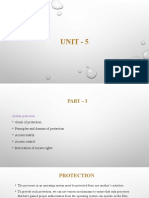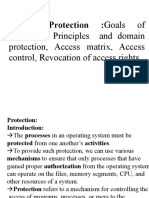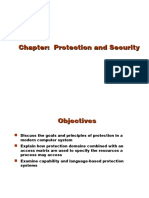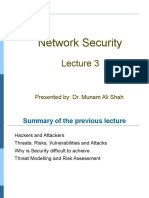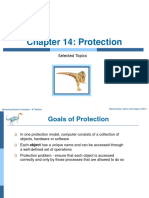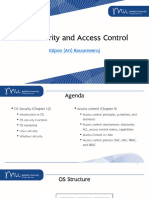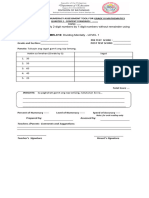0% found this document useful (0 votes)
8 views64 pagesProtection and Security
Chapter 7 discusses protection and security in computer systems, outlining goals such as preventing unauthorized access and ensuring resource use aligns with policies. It introduces principles of protection, including the principle of least privilege, and describes the domain of protection through access matrices and their implementations. The chapter also addresses security threats, including program and network threats, and emphasizes the importance of security measures across physical, human, operating system, and network levels.
Uploaded by
phong.valentia.14Copyright
© © All Rights Reserved
We take content rights seriously. If you suspect this is your content, claim it here.
Available Formats
Download as PDF, TXT or read online on Scribd
0% found this document useful (0 votes)
8 views64 pagesProtection and Security
Chapter 7 discusses protection and security in computer systems, outlining goals such as preventing unauthorized access and ensuring resource use aligns with policies. It introduces principles of protection, including the principle of least privilege, and describes the domain of protection through access matrices and their implementations. The chapter also addresses security threats, including program and network threats, and emphasizes the importance of security measures across physical, human, operating system, and network levels.
Uploaded by
phong.valentia.14Copyright
© © All Rights Reserved
We take content rights seriously. If you suspect this is your content, claim it here.
Available Formats
Download as PDF, TXT or read online on Scribd
/ 64












